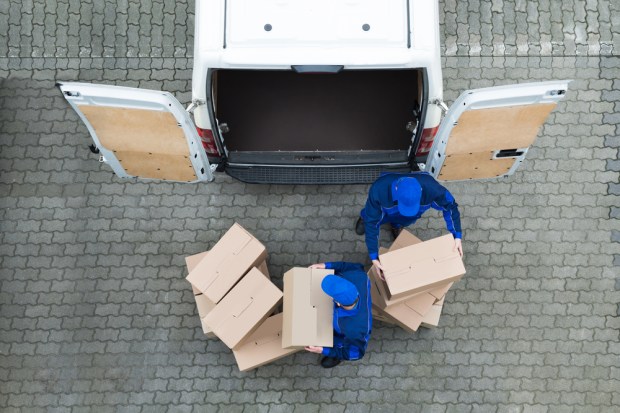Last Mile Sputters Amid Amazon’s eCommerce Haul, Delivery Driver Shortage

The trend is your friend, goes a saying in the stock market. The trend toward a driver shortage, though, is no one’s friend along the last mile.
The friction is of the roughest sort, where deliveries are not made on time and sometimes not at all. That’s bad for consumers and recipients, of course, and it’s bad for merchants that stake their reputations, in part, on doing business in a timely manner. It’s possibly also bad for the economy in general.
In short, it’s not just about the trucks. The shortage of truck drivers has been in the news … but now, count vans and drivers amid the dearth of available vessels for delivery — or, more specifically, the men and women who man the steering wheels. Sometimes the tell lies in the little details. Bloomberg noted earlier this week that job sites, such as Indeed, have shown job postings for delivery drivers up 200 percent since 2015.
Gig economy has wheels, it seems, no pun intended. The pressures are borne out by some insight from stakeholders in delivery itself.
According to CEO Yong Kim of Wonolo — a startup that has backing from Coca-Cola and matches employers with short-term workers — in Bloomberg, “The delivery jobs — and we work with a lot of delivery platforms — are probably one of the more difficult jobs to fill. Not because the jobs are difficult, but because there’s a fierce competition for drivers, and drivers have many options available to them.”
The pressures may intensify, as Amazon Prime seems to, well, be in its prime, with more than 100 million members. Food delivery? Heating up. Amazon helps amp the temp, as it has a few hundred semi-trucks on the road, but also relies on Shipping with Amazon to boost the fortunes of third parties selling their wares. Thus, the firm tried its hand at recruiting thousands of truckers last year.
If demand sizzles, while supply is finite, all sorts of complications can ensue. Bloomberg stated that the gig economy gravitates toward weekend work, which does not gel all that well with weekday deliveries, or lunch time hunger pangs that send GrubHub and others into overdrive. And, as demand/supply is in imbalance, the Amazon model may see some headwinds … which leaves, still, some room for the traditional players such as UPS and Fedex to do what they do.
The ripple effect? Well, one concern is safety — not necessarily on the road, though training is essential for drivers. However, when it comes to food delivery, meals on wheels must be cared for, refrigerated, stored, maintained and given over to consumers with an eye that no one gets sick post-meal, or is simply disgruntled with late deliveries. Consumer complaints are a bane for restaurants that drum up sales based on reputation.
The trends along the last mile, at least in restaurant delivery, are fostering some nods toward standardization. Bloomberg notes a coalition may form, made up of restaurant associations, that may look for standards across third-party delivery, and may even seek regulation.
Beyond those verticals, the impact may be felt through the economy at large. To attract talent, wages go up. To keep talent, wages go up. When wages go up, prices go up, as companies seek to protect margins. And, thus: Inflation, which no one loves (and it should be noted that rates are already on the rise, albeit off a historically low base). Get ready for driver shortages to potentially lead to … wallet shortages.
